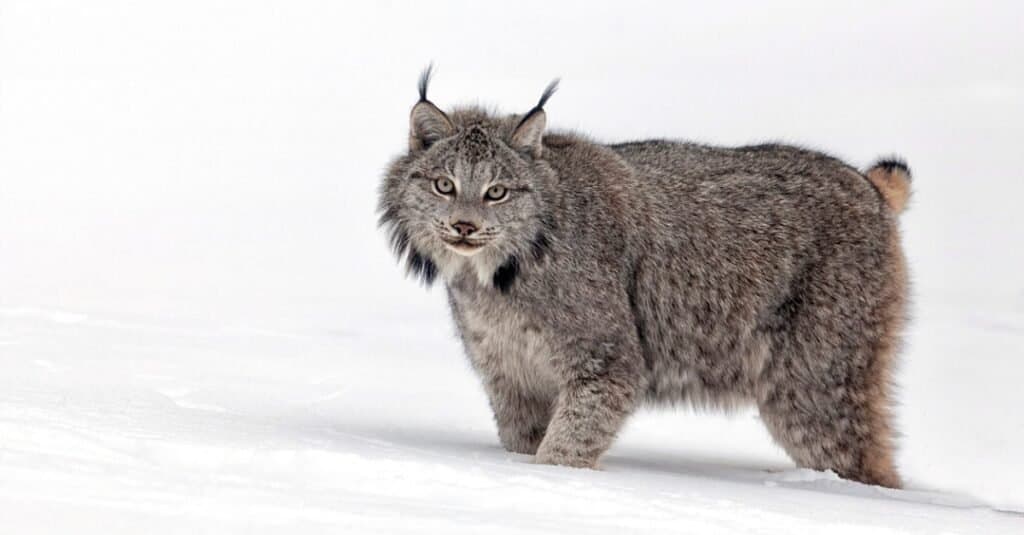Below you can find a complete list of Arctic animals. We currently track 52 animals in the Arctic and are adding more every day!
The Arctic is the area around the North Pole that used to be known for being cold year-round. With climate change, temperatures have reached as high as 100 degrees Fahrenheit, which has disturbed the habitat of some of its most iconic animals. The Arctic is made up mostly of the Arctic ocean, its many islands, and the far northern lands of Europe, Asia, Russia, Greenland, Canada, and Alaska. Seas that are part of the Arctic Ocean include the Chukchi Sea, the East Siberian Sea, the Barents Sea, the Laptev Sea, the Greenland Sea, the Kara Sea, and the Norwegian Sea.

During the winter months, the Arctic is in perpetual night, while during the summer the sun shines on most areas for most of the day. Much of the Arctic is tundra, which means that the temperatures are so cold and the amount of sunlight so scant that trees don’t grow there. The subsoil in the Arctic tundra is also permanently frozen and is called permafrost, though it too is melting in places. Still, wildlife in the Arctic is unique and abundant, even though some of it is endangered.
The Official National Animal of the Arctic
The official national animal of the Arctic is the polar bear. Here are some facts about the polar bear:
The polar bear is the largest bear and the largest carnivore in the world, larger even than the grizzly. An adult male or boar can weigh between 770 and 1540 pounds, while a female or sow weighs about half that. It is unique for its white fur, though this is an optical illusion. The bear has two layers of fur. They are the underfur and the guard hairs, which are actually transparent. Interestingly, the polar bear’s skin is black. It is found on the islands of the Arctic Ocean and on the ice floes of its seas, and so is considered a marine mammal by scientists.
Rarest Animal in the Arctic
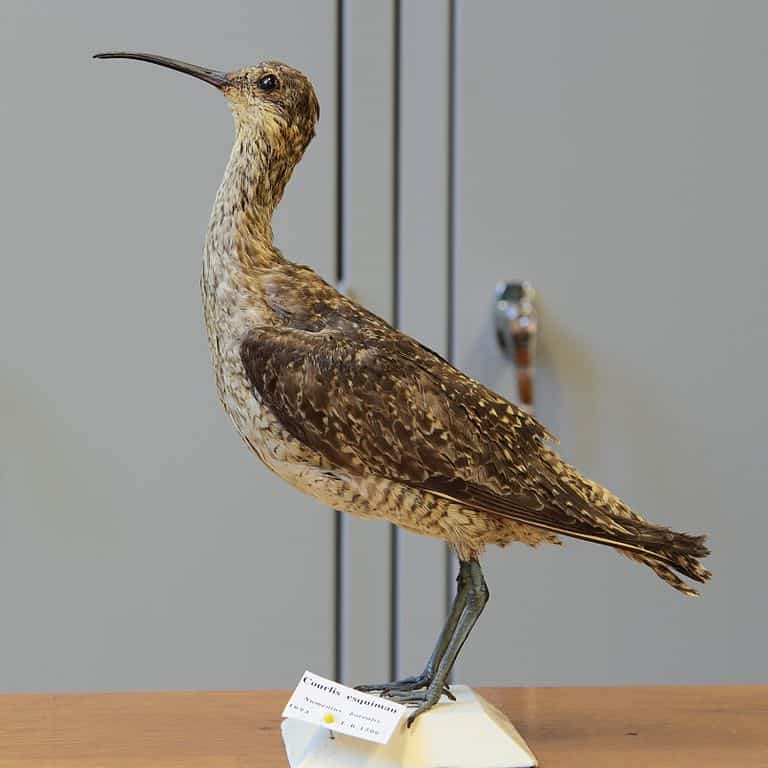
The rarest animal in the Arctic region is the critically endangered Eskimo curlew, also known as the prairie pigeon. In the 1800s millions of these birds followed migration routes from the Yukon and Northwest territories across Canada, then south over the Atlantic Ocean to South America for the Winter. On their journey North, they travel across the great plains of the U.S.
Eskimo curlews form a species pair with the smaller Asian little curlew and are a mottled brown bird with long dark grey legs and a long bill curved slightly downward. The birds eat berries, snails, and insects.
There was a time when Eskimo curlews may have been one of the most numerous shorebirds in North America, with a population in the millions. As many as two million birds per year were killed near the end of the 19th century. Eskimo curlews are fully protected in Argentina, Brazil, Canada, Mexico, and the United States.
Rarest Animals in the Arctic

Arctic Fox
The Arctic fox is native to the Arctic regions and well adapted to living in the cold environment with its extra thick white coat that matches the snow in winter. Their small ears resist frostbite and the dark skin under their fur helps them absorb heat. As a matter of fact, their diminutive size also contributes to their survival. They typically weigh 5 – 15 pounds and are only 18 – 27 inches long – the same size as a small dog or a cat.
This beautiful animal has been declining in numbers due to overhunting. Because of diminishing ice, red foxes have encroached on the Arctic foxes’ territory, causing them to compete for the same food. Red foxes have been seen killing their white counterparts.

Narwhal
Narwhals are small whales native to Arctic waters around Greenland, Canada, and Russia. They are known for their distinctive tusk, usually found in males, that grows up to three meters (9.8 feet) in length. The purpose of the tusk is debated but it could be used to hunt fish or to detect the level of salt in the water. Narwhals lack a dorsal fin and are a mottled gray with a light underbelly. Males grow up to 5 meters (16.4 feet) and weigh 1,600 kg (3,500 pounds) – females weigh around 1,000 kg (2,200 pounds).
These little whales have evolved to be one of the deepest diving marine mammals, capable of diving to depths of more than 1,800 meters (5,905 feet) and able to spend much of their time below 800 meters (2,625 feet). Narwhals have totally adapted to live in the icy water of the Arctic and never migrate. They live up to 50 years and are seen in pods of 50 – 100 whales.
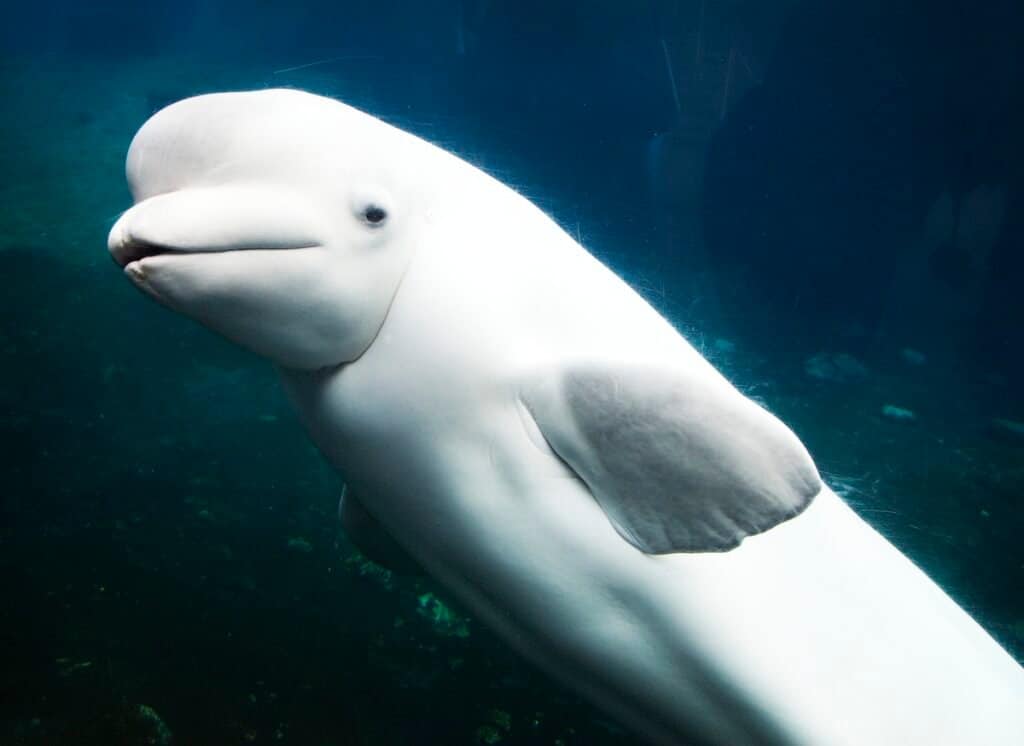
Beluga Whale
These charming little whales are also known as the “canaries of the sea” because of their iconic squeaks, whistles, and chirps they use to communicate with each other. They also have a reputation for being the slowest swimmer among whales with an average speed of only 2 – 6 mph. Compare that with the speed of an orca – who can swim 28 mph.
The Beluga whale shares the family name Monodontidae with the narwhal, another endangered arctic whale. Adults grow to be 11 – 15 feet long and weigh 1,000 – 3,300 pounds. They are easily recognized by their stark white coloring and the globular head with a friendly-looking face.
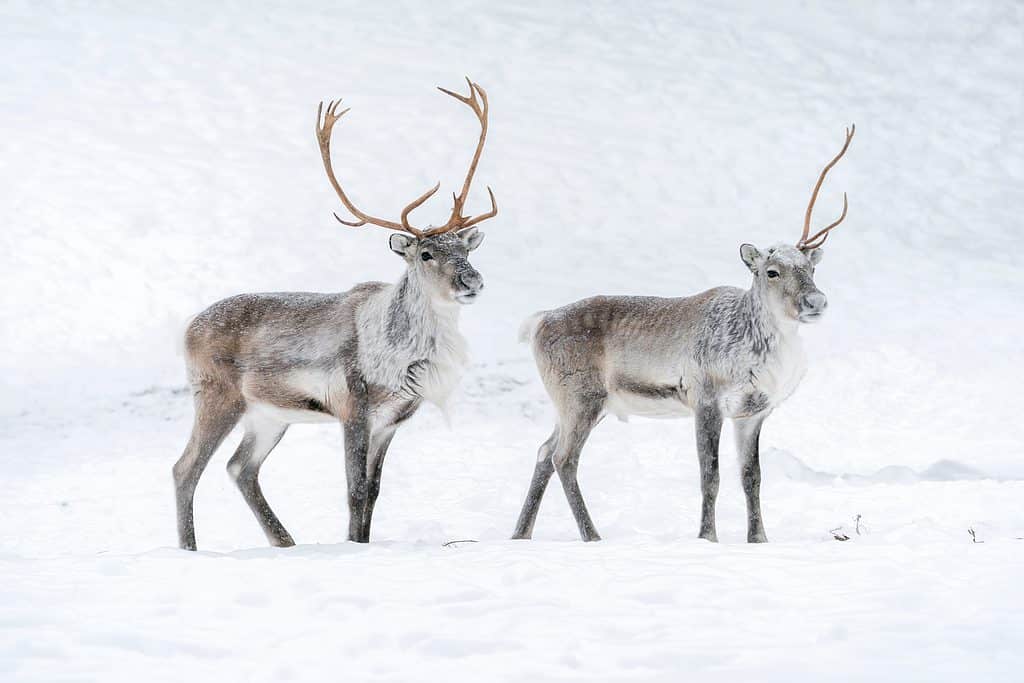
Caribou
Caribou, with their magnificent antlers and thick coats, are large deer adapted to living in frigid climates. Their large hooves allow them to stay on top of heavy snow and they have hair on the bottom of their hooves for extra warmth. Caribou are the only species of deer where both males and females have antlers.
Caribou are considered endangered with one species, the mountain caribou, near extinction. These majestic deer used to roam the arctic in great herds but have seen a global 40% decline in the last 50 years. Their primary threats are land clearing associated with industrial-scale natural mining and infrastructure development.
Also called reindeer, caribou are important to the Arctic ecosystem by adding nitrogen to the tundra soil and water with their droppings. They serve as prey for carnivores such as bears and wolves and sustenance for indigenous hunters.
Largest Animal in the Arctic
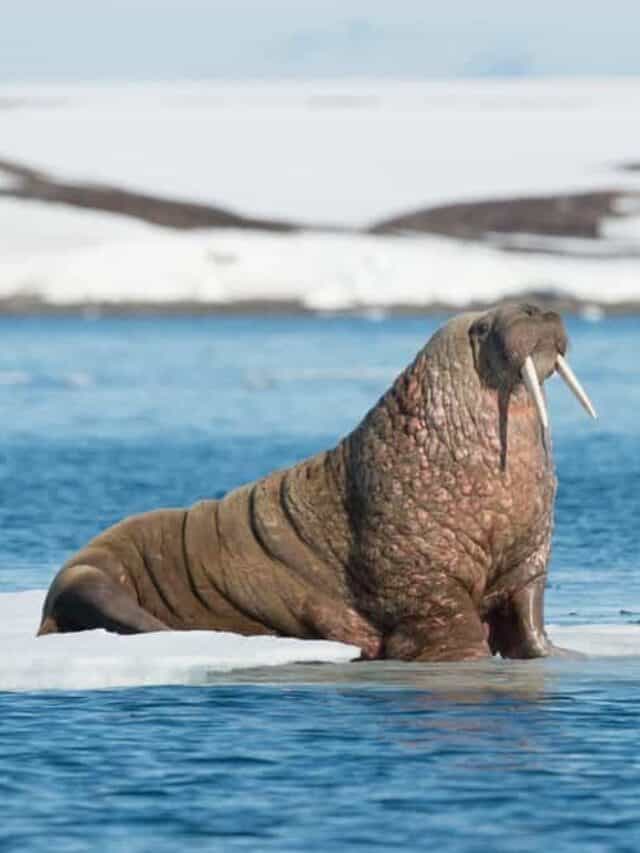
Pacific Walrus
The Bering and Chukchi seas and along the coasts of Alaska and Russia are the homes of the Pacific walrus. These are the biggest animals in the Arctic, strong-bodied with a tough hide that is an inch thick. Their most distinctive feature is their long ivory tusks grown by both males and females. They have hundreds of short highly sensitive whiskers that they use to search the seafloor for food. Adult males are up to 12 feet long and can weigh up to 2 tons – females are smaller and can weigh up to 1 ton.
The Pacific walrus depends on pack ice for its survival – just like the polar bear. Climate change has caused thawing at such alarming levels that this animal is now in danger. The pack ice was used as a nursery for their calves and as a source of clams for their diet.
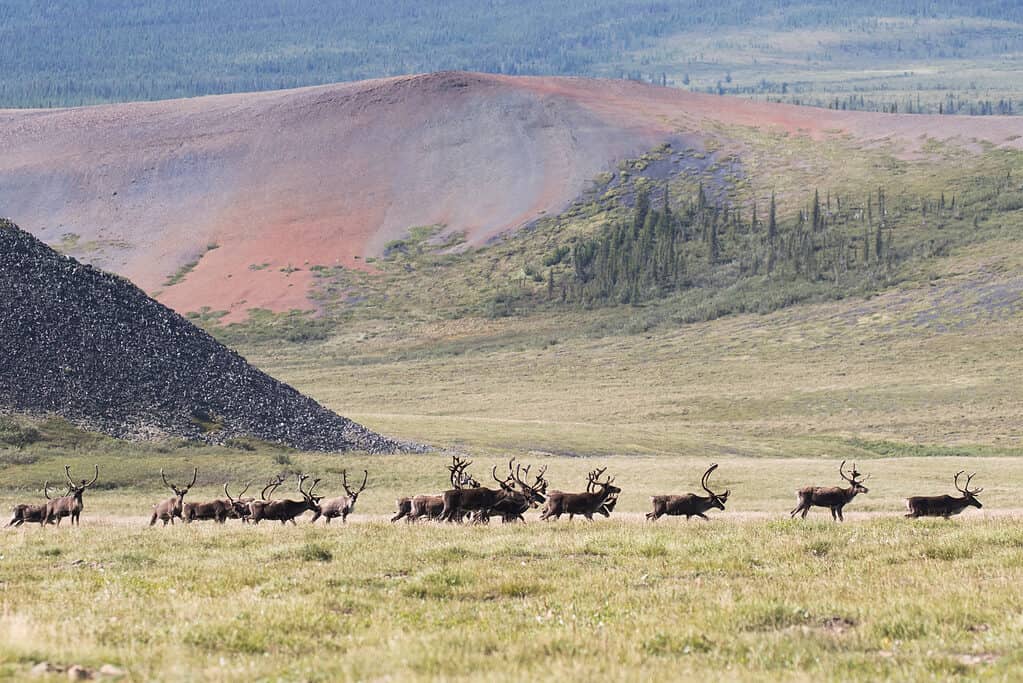
Where To Find The Top Wild Animals in the Arctic
The top wild animals in the Arctic can be found in United States’ Arctic National Wildlife Refuge, which is a 19.6 million acre spread found in northeastern Alaska. Among other animals, a person can witness the spring migration of the porcupine caribou herd. Animals can also be seen in the National Petroleum Reserve-Alaska, which is even bigger than the Arctic National Wildlife Refuge at 23 million acres.
Other places to see Arctic animals are the Ninginganiq National Wildlife Area, Polar Bear Pass, and Coburg Island in Nunavut, Canada.
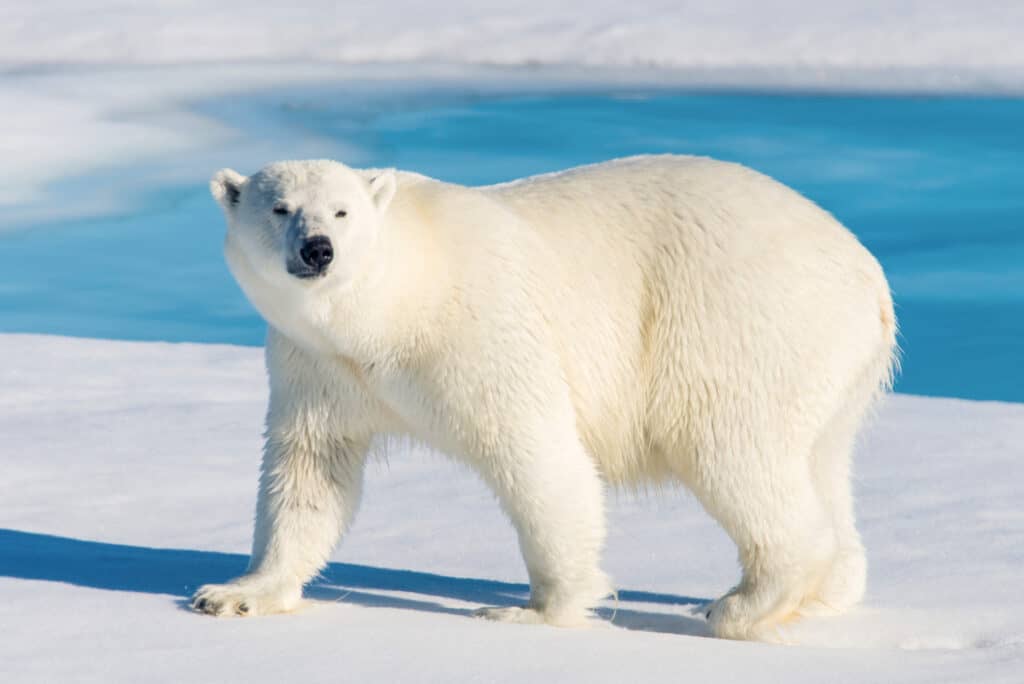
The Polar Bear is the Most Dangerous Arctic Animal
The polar bear has no natural predators and no fear of humans – making them extremely dangerous. At 1,500 pounds, it is one of the largest carnivores on earth. At 1,235 PSI, polar bears have a greater bite force than great white sharks, tigers, and African lions. Their sense of smell is so keen that they can smell a seal 20 miles away. Polar bears prey on seals, walruses, beluga whales, and narwhals – and anything else that gets in their way. All they need to survive are seals and an ice sheet to hunt them from – which is why the melting ice of the arctic is causing them to be in danger of losing their habitat. Polar bears can swim for days at a time but not indefinitely.
The Most Dangerous Animals In The Arctic Today
- Polar bears — They may look like teddy bears – but the Arctic’s national animal is dangerous. There have been 73 known attacks by polar bears, and people died in 20 of them. Most of these attacks were on people traveling in pairs or groups.
- Grizzly bear — This huge bear also attacks humans, though the attacks are rare. Alaska saw 10 fatal attacks by bears between 2000 and 2017 and seven of them were caused by brown bears, which include the grizzly.
- Wolverine — The wolverine is a stocky and powerfully built animal that looks like a cross between a bear and a weasel. It is known to be aggressive and routinely kills prey much larger than itself, but there are no reports that it has attacked humans. Still, this animal deserves respect.
- Canada lynx — This medium-sized wild cat preys on snowshoe hares and is not known to have attacked humans, but if it’s cornered or threatened, it will defend itself ferociously.
